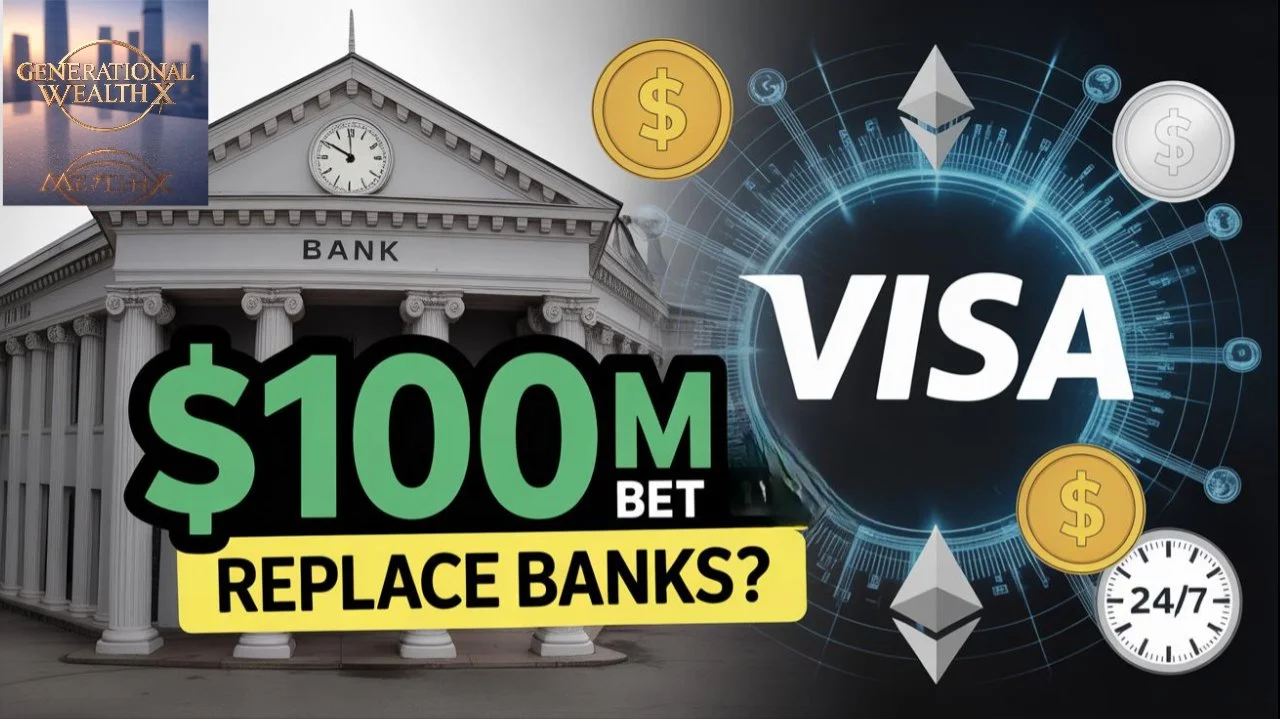Visa’s $225 Million Blockchain Bet: Why Banks Should Be Terrified
How the World’s Biggest Payment Processor Is Building a 24/7 Financial System and Leaving Old-School Banks in the Dust
For half a century, the global economy has relied on a simple but frustrating promise: your bank will settle your money... eventually. But in a world that moves at internet speed, “eventually” just isn’t good enough anymore.
The Hidden Reality Behind “Instant” Payments
Tap your card. Payment approved. Feels instant, right? Not so fast. Behind the scenes, your money is crawling through a system built for a different era—one that clocks out at 5 PM and takes weekends off. The actual cash? It won’t move for days.
Now, imagine sending an email on Friday and having it arrive on Monday. That’s the reality for most international bank transfers. This isn’t just annoying; it’s a massive drag on the global economy. Banks have made billions acting as slow, expensive middlemen—especially on cross-border payments. For decades, it’s been their world. But it’s not the only world anymore.
The $225 Million Warning Shot 💸
Enter Visa. The world’s largest payments company is making a bold move that’s shaking every bank to its core. Instead of resisting change, Visa is betting big—over $225 million settled in stablecoins so far, with a run rate hitting $1 billion as of September 2025—on a parallel financial system that never sleeps.
This isn’t a test run. This is a live, global strategy. Visa is plugging its trusted payments network directly into blockchain rails, working with fintech giants like Worldpay and Nuvei, and settling across Ethereum, Solana, Avalanche, and Stellar. The mission? Faster, cheaper, 24/7 settlement using stablecoins like USDC.
Why Stablecoins Change Everything
Stablecoins are digital currencies pegged to real-world assets (think US dollars), combining the speed of the internet with the reliability of traditional money. With these new rails, money can move across the globe in seconds, not days—no banks, no middlemen, no delays.
In emerging markets, this tech isn’t just a cool upgrade—it’s a game-changer. Remittance and settlement costs can drop by up to 70%. For millions, that means more money in their pockets, less lost to fees, and a financial system that works as fast as life moves.
Visa’s Strategic Pivot: Becoming a “Network of Networks” 🌐
Visa’s playbook? Don’t fight the future—build it. By integrating with multiple blockchains and stablecoins, Visa is transforming itself into a “network of networks.” As Cuy Sheffield, Visa’s Head of Crypto, puts it: they’re “improving the speed of cross-border settlement and providing a modern option for our clients.”
This hybrid model blends the trust of established networks with the speed and efficiency of blockchain. And it’s opening up new markets, especially in regions like Africa and Latin America, where demand for dollar-based digital assets is exploding.
The Existential Threat to Banks
Banks are watching nervously. Their core business—settling money slowly and charging for it—faces extinction. Visa’s move is a clear signal: the days of three-day settlements and banking holidays are numbered. Finance is finally becoming a 24/7 operation, and the old guard is running out of time to adapt.
The Future of Finance: Trust Meets Speed 🚀
Visa isn’t trying to replace the dollar. They’re upgrading the tracks it runs on. The future is a hybrid: the reliability of established institutions, powered by the speed of blockchain. Visa isn’t just betting on this future—they’re building it.
So here’s the big question: If the company that perfected the credit card is rebuilding for a blockchain world, what does that mean for the bank that still closes at 5 PM?
Want deeper insights on building generational wealth through crypto?
Check out more strategies and join the insiders group at Generational Wealth.
What’s your take—are banks doomed, or will they adapt? Drop your thoughts in the comments! 👇
Follow for more on crypto, blockchain payments, and the future of money.


